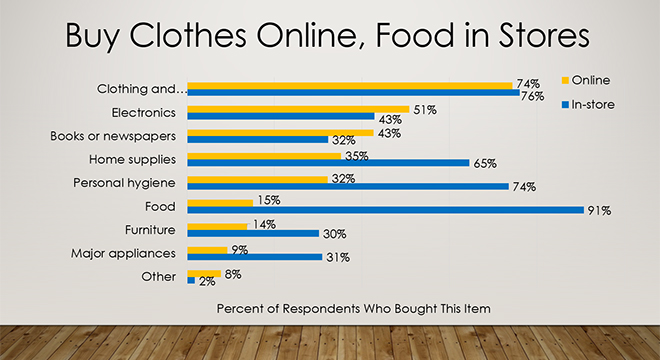The common assumption that millennials only shop online and avoid brick-and-mortar merchants just doesn’t fit their behavior patterns, according to a survey from a Texas A&M Transportation Institute researcher.
The purchasing behavior of millennials — who now account for about 25% of the population — impacts freight policy, trade, economic trends and infrastructure, said Sarah Overmyer, assistant transportation researcher at TTI, who presented her results at the Transportation Research Board’s annual meeting here.
She disputed the notions that millennials are glued to their smartphones, rent a place in a city and need immediate delivery of their online purchases, and pointed to delivery trends to make her case.
“If this were true, cities would be more congested. And if [millennials] made all their purchases online, it would disrupt freight patterns,” Overmyer said. “If they did demand ASAP delivery, then trucks would be performing gymnastics to respond.”

And the growth of e-commerce has a direct bearing on the trucking industry. In the third quarter of 2017, retail e-commerce sales in the United States came in at $115.3 billion, a rise of 15.5% from the same period in 2016, according to the Census Bureau. E-commerce sales in the third quarter accounted for 9.1% of all retail sales. To better understand millennial e-commerce purchasing, Overmyer conducted a panel survey of 1,310 18- to 34 year-old Texans, gathering demographic data and questioning them on their shopping preferences and online behavior.
Online shopping was part of their everyday lives as 68% of those surveyed said they had received an online package in the past week. However, 75% of those packages had arrived three days or more after ordering.
That shoots down the assumption on immediate delivery, Overmyer said. Further, only 45% of those surveyed were members of the Amazon Prime service that promises two-day delivery on certain purchases.
And most millennials, 75%, made purchases both online and in-store; just 14% were online only shoppers, while 7% were exclusively in-store shoppers. About three-quarters of respondents bought clothing online and in-store, while 74% preferred to buy personal hygiene products in-store, and 91% bought food in a grocery store.
Census Bureau data from 2015 shows that about 29% of Texas millennials live with their parents or another relative, but that doesn’t mean that they cluster in cities.
Overmyer found that about 66% live in the suburbs. And they want to put down roots; nearly half plan to buy a home in five years, with 50% wanting to be in the suburbs, 26% in an urban area and 23% in a rural area.
“The survey shows that millennials may not be as different as we thought,” Overmyer said. “They live in the suburbs, they shop in stores, and they don’t require two-day delivery.” She added, “Still, two-thirds got an online delivery in the last week.”









